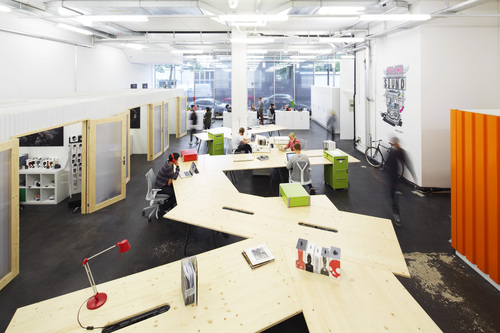
A recent competition revealed some of the world’s most innovative workplace designs.
A recent competition from ArchDaily in collaboration with HP asked professionals and students to enter the most innovative workplaces that are “pushing the boundaries of workplace design”. There were almost 150 entries, and some are truly remarkable.
The competition focused on the architecture of the workplaces, and as expected, many adopted hot-desking arrangements, activity-based workspaces and open-plan settings. For example, Lamar Advertising’s corporate headquarters encourage the “chance meetings” of workers in corridors and around coffee pots, with a sparse and bright design that heavily utilises natural lighting.
iProspect’s new Fort Worth office attempts to capture a feeling of being at home, as the careers at the company lend themselves to long office hours. The office kitchen is connected to a designated “living room” which employees can use for both work and relaxation.
However, the homely feeling isn’t an attempt to remove the idea of hard work: a curved-shaped conference room dubbed The “Brain Room” provides an area that fosters and encourages collaboration from all employees on ideas and projects.
Skullcandy’s offices in Switzerland allow for desks to be moved and reconfigured by employees, resulting in greater ease in switching from collaboration to individual work.

The most interesting workplace was the public shared workspaces at miLES storefronts. “Utilizing previously underused storefronts in the neighbourhood, the mission is to open storefronts to possibilities by creating multi-use spaces within a neighbourhood,” the designers, Architecture Commons PLLC, stated.
The storefront allows for both public and private businesses to enter and set-up temporarily in the workspace, whether they are manufacturing clothing or writing copy.
“It invites creative interpretation of the function of such spaces: is it a space with an office? Multiple offices? A network of freelancers?” Architecture Commons said.
The “pilot storefront” has blossomed, with more than 100 requests from businesses and entrepreneurs to utilise the space, forever evolving and changing with each tenant.
Interested readers can check out previous HC articles highlighting the pros and cons of deconstructed offices and hotdesking.
For a full list of entrants and the winners, click here.
What do you think of these innovative workspaces? Are they the path of the future, or can they exist in harmony with traditional workplaces?